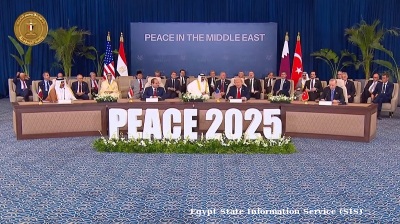Kenya is in talks with China – the East African country’s biggest bilateral lender – to convert a dollar-denominated loan to fund a railway project into renminbi (also known as the Chinese yuan) as part of Kenya’s drive to reduce the $1bn it spends annually on servicing its debt.
Bloomberg first reported on the bilateral talks on August 20, following an interview in Nairobi with Treasury Secretary John Mdabi, who said discussions were expected to conclude soon, without elaborating.
“The moment we move from US dollar to renminbi, automatically, the interest rate reduces by almost half,” while adjusting the tenor of the loan would also be helpful, the minister told the news agency. “To us, that is a big saving.”
According to Treasury data cited by Bloomberg, of Kenya’s $40.5bn in external debt at the end of March, it owed $14.4bn to the World Bank, $7.52bn to Eurobond investors and nearly $5.04bn to China.
Mdabi said the talks with China centre on loans Kenya took to build a $5bn high-speed standard-gauge railway (SGR), connecting the port city of Mombasa to Nairobi and onwards to Naivasha, a town about 90km northwest of the capital.
Launched in 2017, the railway was built by the China Road and Bridge Corporation and financed largely through commercial and concessional loans from China’s Exim Bank.
The Kenya-China talks come as President William Ruto works to reduce his country’s reliance on traditional foreign borrowing, including the now prohibitively expensive Eurobond market, instead turning to Asian lenders and a diversified bond market.
Meanwhile, Kenya is at high risk of debt distress according to the International Monetary Fund (IMF), a classification in line with recent assessments by ratings agencies. Over the past 10 years, its total debt has quadrupled, in part owing to taking loans on big infrastructure projects, reaching $87.6bn in March, equivalent to 70% of GDP.
Late last month, Fitch Ratings affirmed the country’s Long-Term Foreign-Currency Issuer Default Rating (IDR) at ‘B-’ with a stable outlook. But it warned of weak revenue mobilisation and growing debt service obligations. Fitch projected that Kenya’s fiscal deficit would reach 5.2% of GDP in FY26, exceeding both the government’s target and the 3.6% median for similarly rated peers.
Also in late July, Moody’s said that Kenya’s public debt servicing costs were projected to remain among the highest globally, as the government continued to rely heavily on local markets to fund budget deficits. Domestic investors – banks, pension funds and insurers – hold more than half of Kenya’s public debt.
As regards the SGR project loan, apart from lobbying China to convert the loan into yuan, Kenya hopes to generate $4bn by securitising a levy on imports, to finance a planned extension of the China-built railway to Kisumu and Malaba, near the Ugandan border.
The railway development levy, charged at 2% on the value of imported goods, generates about KES 50bn ($387mn) annually. “We’re seeking to allow securitisation of this levy and use it to raise funds,” Transport Secretary Davis Chirchir told Bloomberg in an interview two weeks ago.
Last month, as bne IntelliNews reported, Kenya Railways Corporation came under scrutiny for accumulating KES 34.1bn ($263.32mn) in avoidable interest and penalties on a loan from China’s Exim Bank that financed the SGR.
According to the Auditor-General’s report for the financial year ending June 2024, the charges stem from delays in servicing the on-lent loan, which forms part of the KES 646bn ($4.99bn) still owed to the Chinese lender.
News

US, Egypt, Qatar, and Turkey sign agreement to end Gaza war at Sharm El-Sheikh Summit
The US, Egypt, Qatar and Turkey signed a binding peace document on October 13, guaranteeing a ceasefire in the Gaza Strip, marking what President Trump called “perhaps the greatest achievement” of his presidency.

Pakistan, Afghanistan exchange fire along contested Durand Line
Pakistan has claimed responsibility for killing over 200 Taliban fighters in a series of precision strikes along the contested Durand Line.

Trump lands in Tel Aviv as Israeli hostages begin return home
Donald Trump arrives in Israel as the first Israeli hostages are released from Hamas' captivity.

Von der Leyen to confront Hungary’s EU Commissioner over reported espionage attempts in EU institutions
European Commission President Ursula von der Leyen intends to personally discuss espionage allegations with Hungarian Commissioner Oliver Várhelyi, Commission spokeswoman Paula Pinho said at a press briefing in Brussels on October 10.




